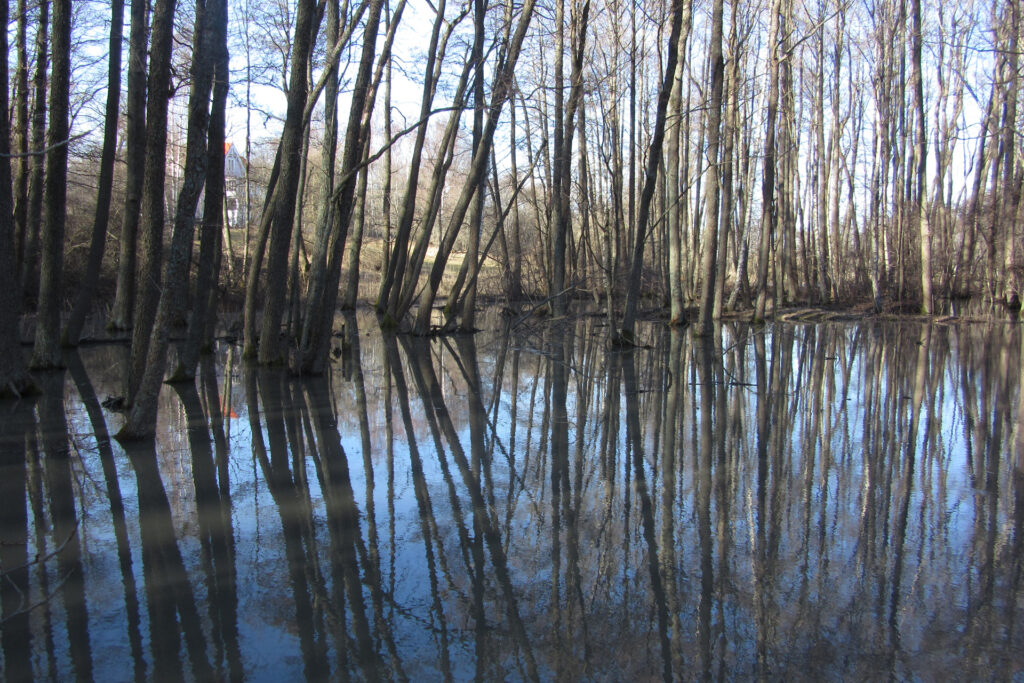
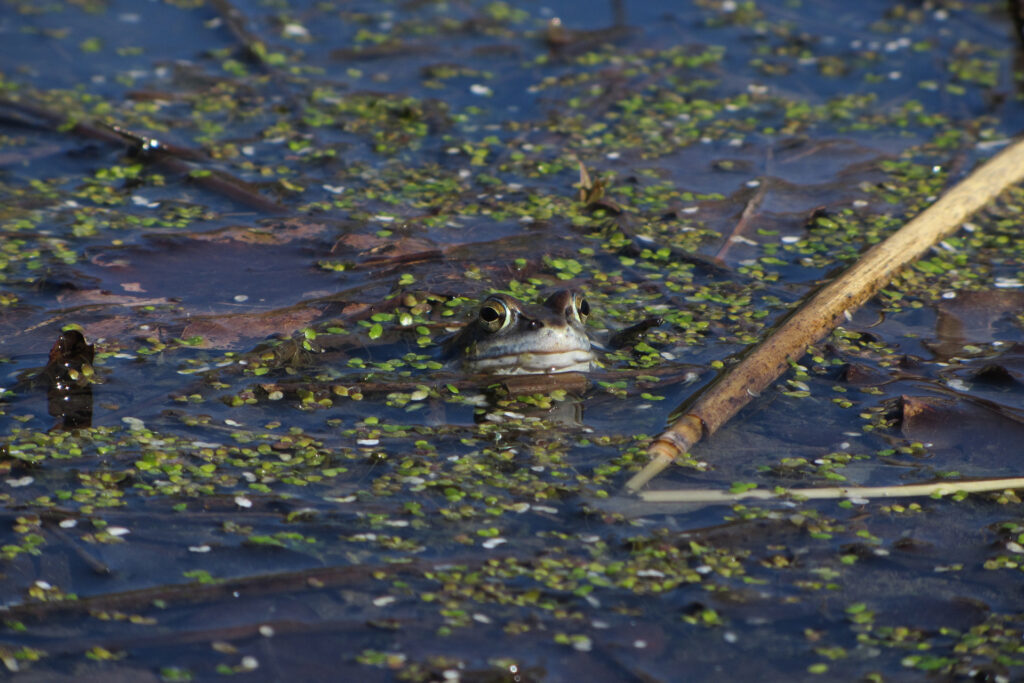
Ponds are full of life
In shallow ponds, the water warms up quickly. This causes microscopic plankton algae to start photosynthesising, creating the foundation for the diverse pond ecosystem. For plants and small invertebrates, the pond is a lifelong habitat, their entire world. For others, such as frogs, small water bodies serve as essential breeding and wintering spots. There are also numerous species that use ponds as hunting grounds or water holes. In any case, the flora and fauna of ponds are surprisingly diverse.
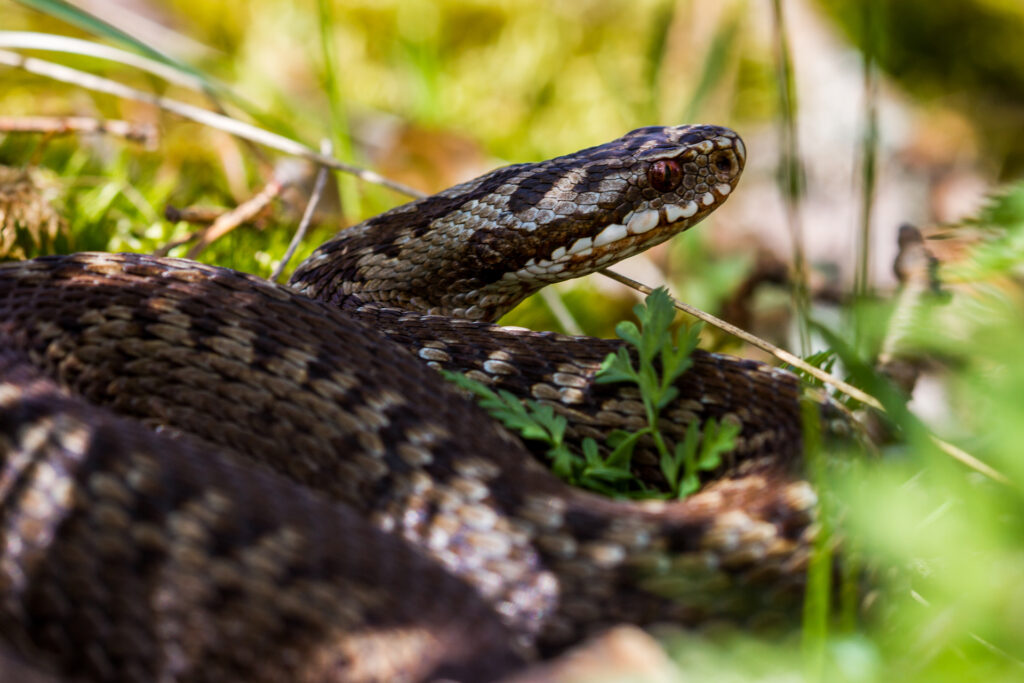
The grass snake is non-venomous, prefers coastal areas and is also an accomplished swimmer. The grass snake is Finland’s largest snake, capable of growing to over one metre. Grass snakes are typically dark in colour and often have distinctive yellow spots on the backs of their necks, though there are also individuals nearly devoid of spots.
The common European adder is the only venomous snake found in Finland. Luckily it only bites when it feels it has no other choice and always tries to hide or flee before doing so. Common European adders come in both brown and grey-black. They usually have a distinct zigzag pattern on their backs, by which the species is easy to identify, but some individuals are almost completely black. Viewed up close, the common European adder has a triangle-shaped head, and their pupils are vertical ovals. The common European adder prefers drier habitats than the grass snake, such as rocky regions and the edges of fields.
From a human standpoint, the common European adder and grass snake are both useful animals, as they prey on moles, which can otherwise cause significant damage to crops. The grass snake is protected under the Nature Conservation Act, but common European adders also deserve protection, as their numbers have dwindled in many areas due to human activity.
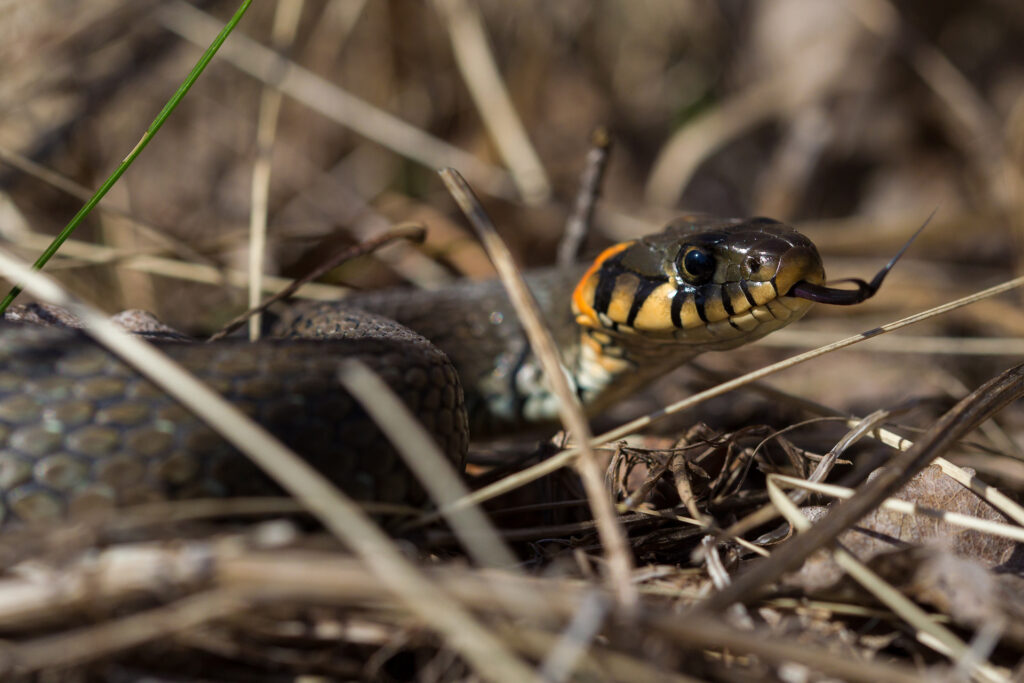
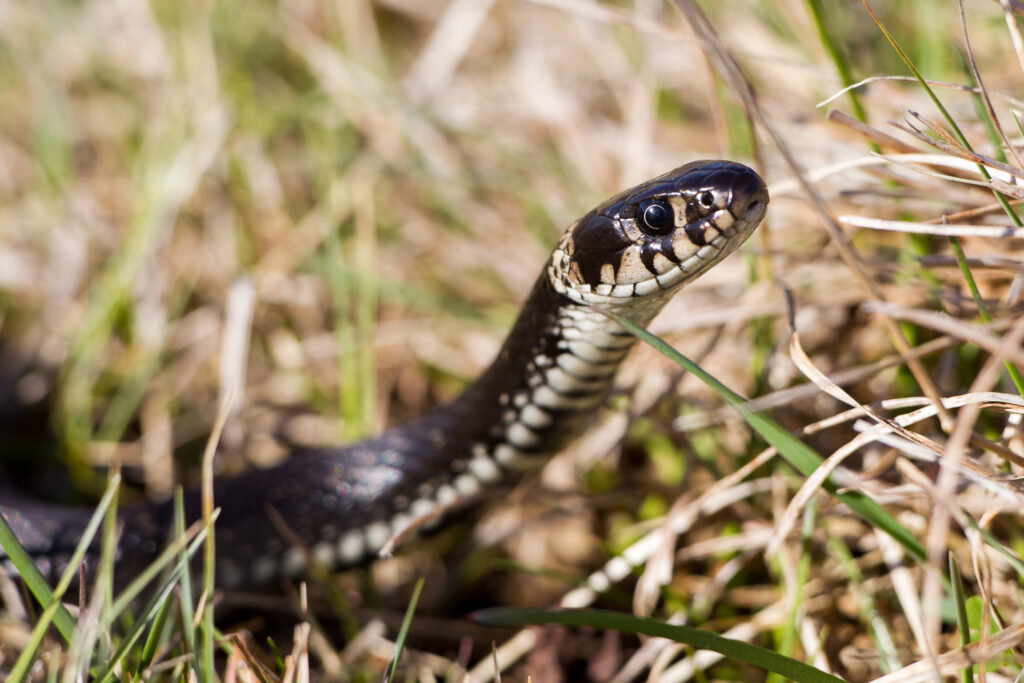
Reptiles on land and in water
Snakes seek out the warmth of the spring sun. Snakes are ectotherms (i.e. “cold-blooded”), due to which they favour southern ridges that get plenty of sunshine and places where they are protected from the wind when basking. Two species of snake are found on Ruissalo: the common European adder and the grass snake.
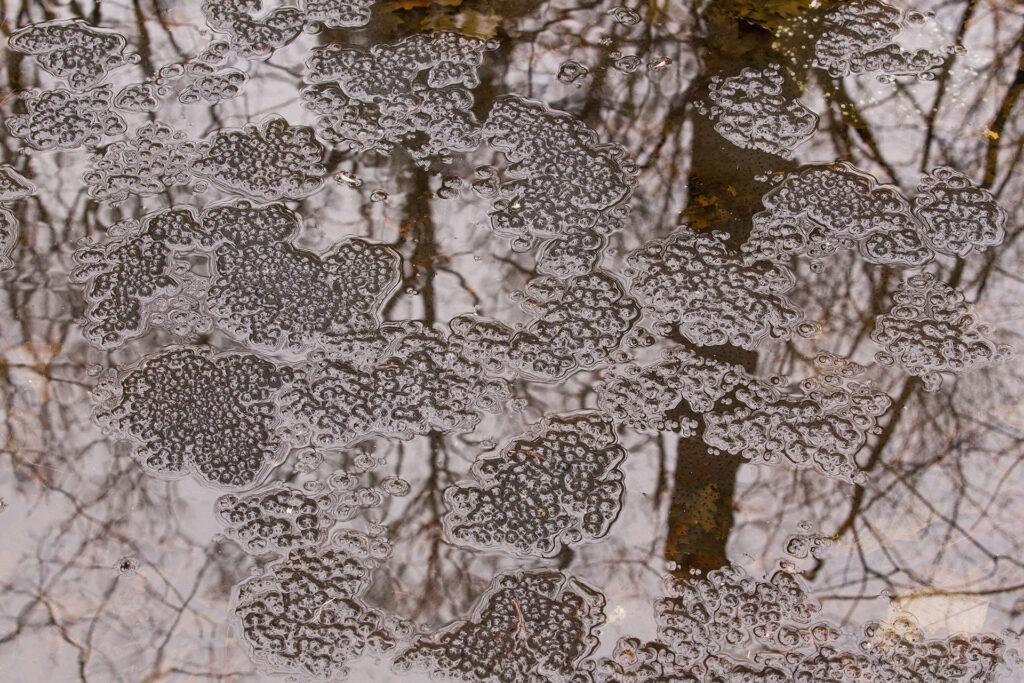
All amphibians require water to breed. They lay their eggs, or spawn, in small ponds, puddles or even ditches. The eggs hatch into larvae, or tadpoles, which breathe through gills and move about using their tails. The larvae then undergo metamorphosis, during which they lose their tails (except for the smooth newt) and their gills turn into lungs: the process turns the aquatic larvae into adults that can survive on both land and in water. In fact, the scientific name of the class of amphibians, Amphibia, is a reference to this ability to live on both land and in water.
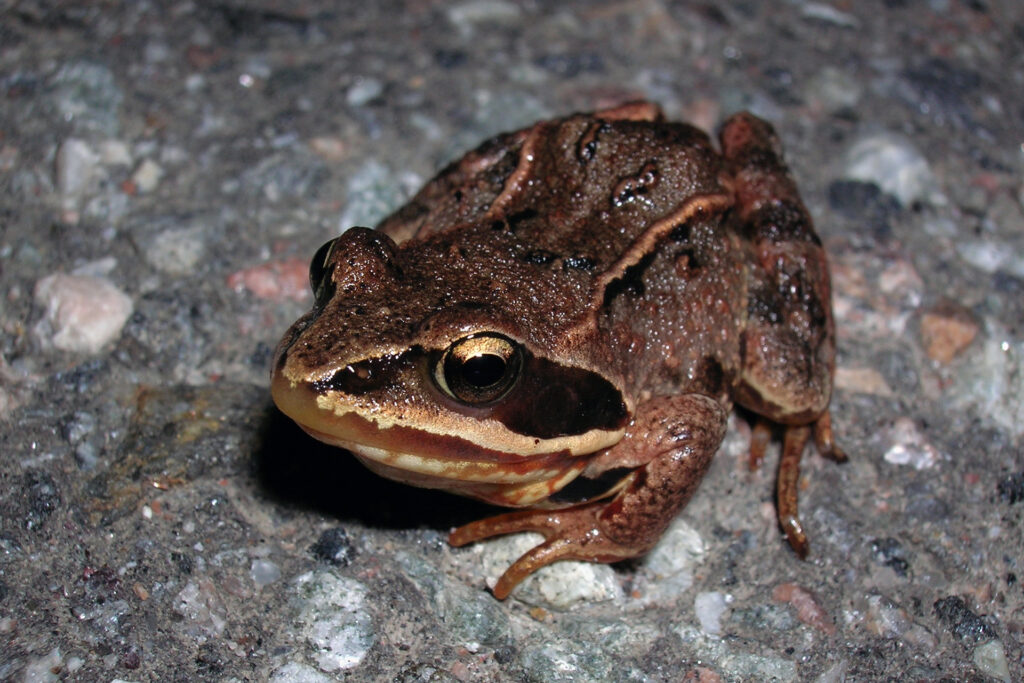
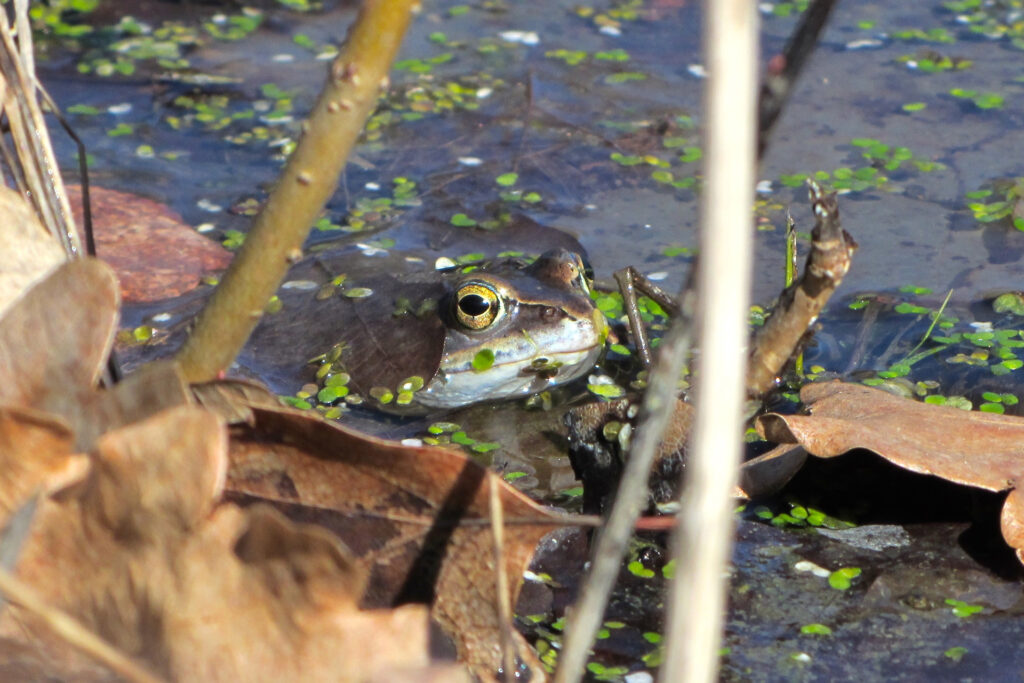
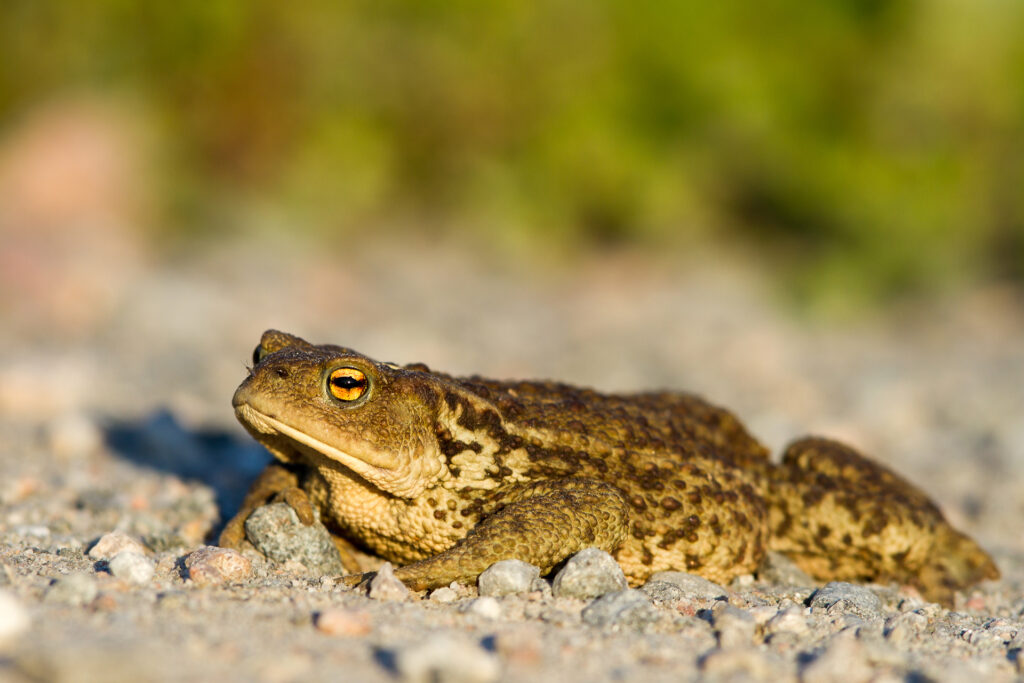
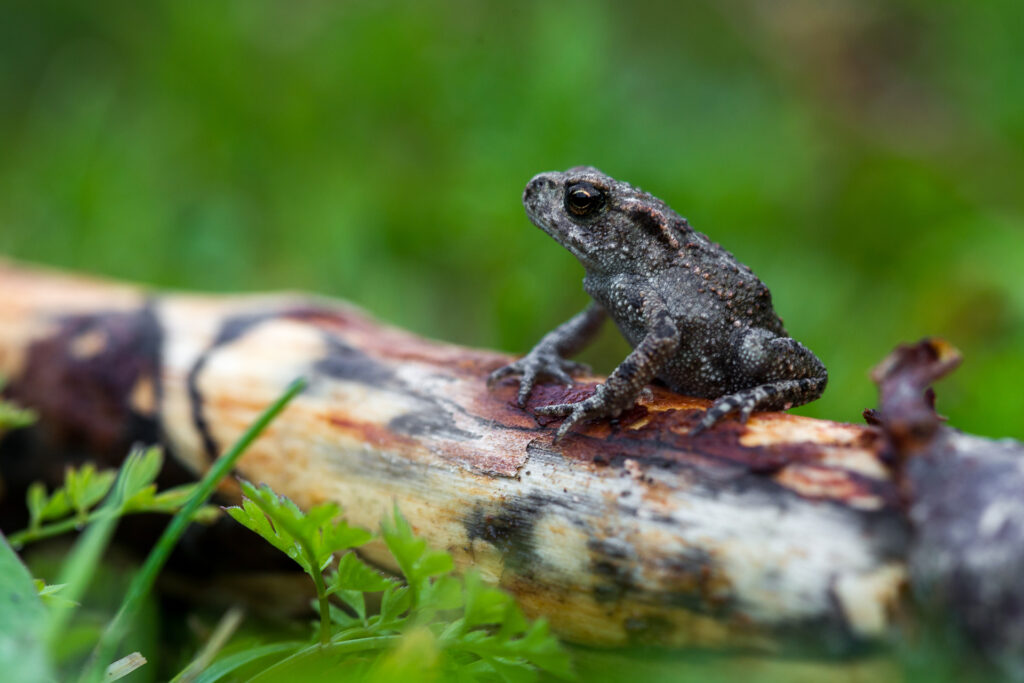
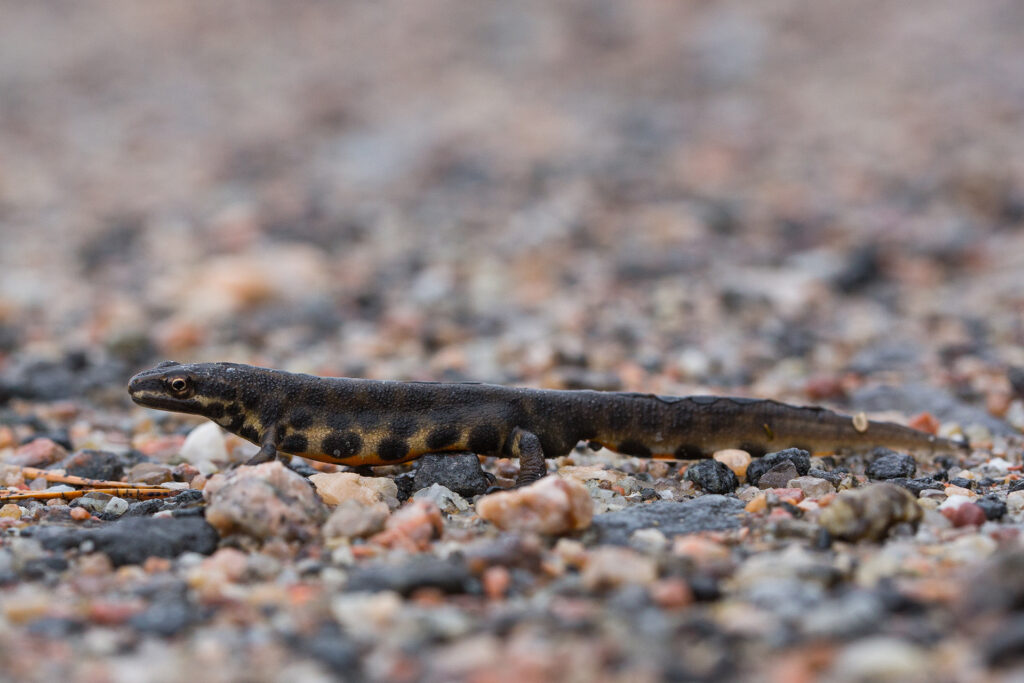
Croaking, bubbling or an impressive spawning guise?
Four native species of amphibians occurr on Ruissalo. European common frogs and moor frogs are easiest to spot and identify by their vocalisations in April–May, during their spawning season. During this period, ponds and puddles are filled with the croaking of European common frogs and the bubbling of moor frogs. Those with keen ears may also be able to distinguish the rougher croaking of the common toad in the same ponds. A generally lesser-known species is the smooth newt, a lizard-like salamander less than 10 cm in length. It is also easiest to spot during the breeding season, in April–May, in small water bodies. While smooth newts are silent, the males are easy to identify during the breeding season by their impressive crests and orange bellies. All of Finland’s naturally occurring amphibians are protected. That being the case, please leave any amphibian eggs, tadpoles or adult individuals that you may find on the island undisturbed.
The diverse flora and fauna of small water bodies spring to life in the spring
In small water bodies – brooks, ponds and wetlands – the onset of spring is sudden. The ice cover is quickly melted by the combined effect of melt water and the sun’s rays, allowing the imprisoned water underneath to flow free once more. The frogs that have spent their winter in the bottom mud of ponds climb out of the water with stiff legs, invertebrates reanimate, the birds return and grass snakes warm themselves in the shelter of the plants.


